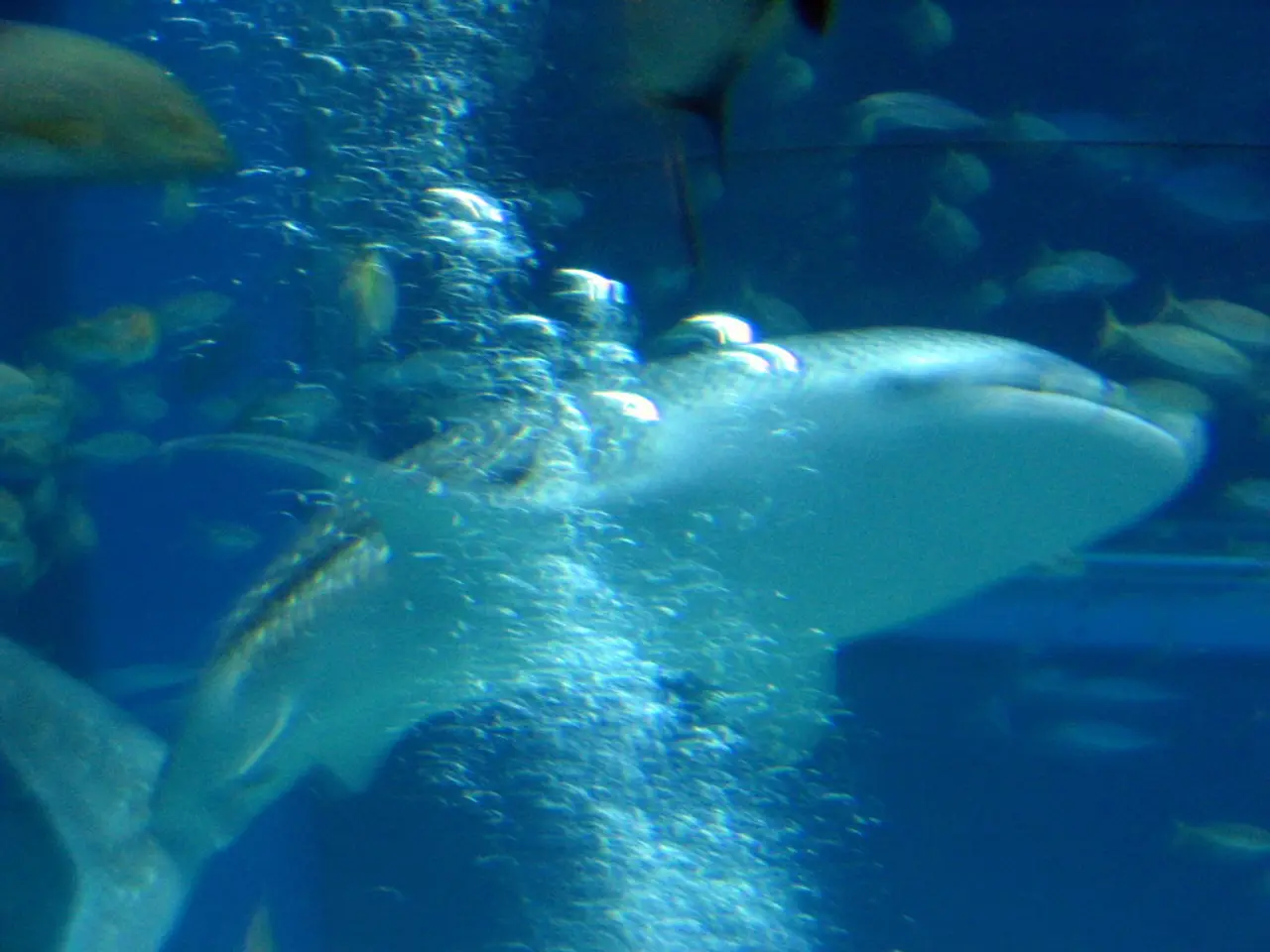Miami's Waters Offer Crucial Habitat for Hammerhead Sharks
In the sun-kissed, shallow waters just off the bustling city of Miami, lies a sanctuary for one of the ocean's most iconic, endangered marine predators. Hidden amidst the seagrass beds and mangrove shorelines of Biscayne Bay, this urban estuary doubles as a "nursery" for the mighty hammerhead shark, according to a study by the University of Miami's Rosenstiel School of Marine, Atmospheric, and Earth Science.
For their most vulnerable years, juvenile great hammerheads heavily rely on Biscayne Bay's inshore habitats and prey. They can grow to lengths of up to 20 feet (6 meters) and feature a unique, wide, T-shaped head and tall, curved dorsal fin that aids in detecting and capturing prey, especially stingrays buried in the sand. Despite their formidable size and impressive hunting skills, great hammerheads are critically endangered due to factors such as overfishing, habitat loss, and sensitivity to capture stress.
Over an eight-year period (2018-2025), a team of researchers examined the feeding and habitat patterns of 62 great hammerhead sharks. By using multi-tissue stable isotope analysis, they were able to understand how hammerheads use Biscayne Bay across different life stages.
Their findings were eye-opening. For their first two years of life, these young sharks depend almost entirely on the bay's inshore habitats and prey. After that, they begin venturing to coastal reefs, but still return to the bay seasonally, usually between late spring and early summer. Some adult sharks even continue to forage in the area, demonstrating the bay's importance throughout their entire lives.
Despite the bay's significance to these majestic creatures, it has been under pressure for decades due to declining water quality, reduced freshwater inflow, and widespread physical degradation caused by rapid urban growth. These changes have largely impacted the bay's ecosystem, posing potential risks for young great hammerheads.
"Juvenile great hammerheads show a constrained diet and habitat use, potentially feeding heavily on small inshore stingrays early in life," said Dr. Catherine Macdonald, a research associate professor in the Department of Environmental Science and Policy, and the director of the Shark Research and Conservation Program at the Rosenstiel School. "This reliance on a narrow range of prey and habitats makes juvenile great hammerheads particularly vulnerable to human activity and environmental change." Miama, being a major destination for recreational fishing, presents a significant concern, as great hammerheads are often unintentionally caught. The species is known to be extremely sensitive to capture stress, with many individuals not surviving even after release.
The study's results offer valuable information for policymakers and conservationists. By understanding the tight bond between these sharks and the bay's resources, especially during their early life, spatial protections, seasonal fishing restrictions, or habitat restoration initiatives can be implemented to support their survival.
Ultimately, the future of great hammerhead sharks may hinge not only on what happens far out in the ocean, but on what we choose to protect right here at home in Biscayne Bay. Conserving this essential nursery habitat can significantly contribute to their overall population recovery.
- In the scientific realm, researchers from the University of Miami's Rosenstiel School of Marine, Atmospheric, and Earth Science have been studying the feeding and habitat patterns of hammerhead sharks in Biscayne Bay.
- The health-and-wellness of great hammerhead sharks depends on the inshore habitats and prey in Biscayne Bay, particularly during their juvenile years.
- For personal growth and learning, people can engage in environmental-science and education-and-self-development activities by supporting conservation efforts for endangered species like the hammerhead shark in Biscayne Bay.
- The future of these magnificent creatures is interconnected with the climate-change, water quality, and urban development in Biscayne Bay, making it crucial for environmental conservation and sustainable sports-betting practices.
- The sustainability of Biscayne Bay's wildlife, including the great hammerhead shark, is not only essential for nature and wildlife preservation but also for the fitness-and-exercise, health-and-wellness, and sports enthusiasts who enjoy the bay's recreational activities.







